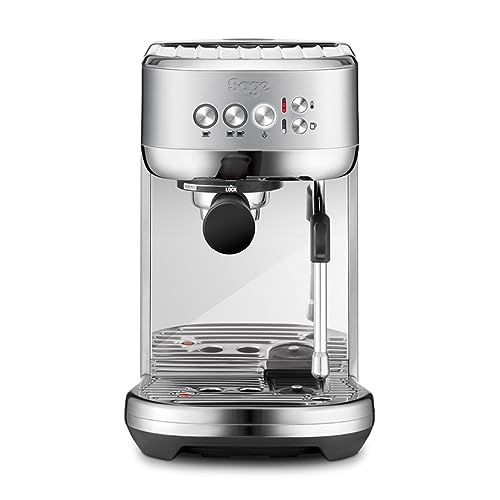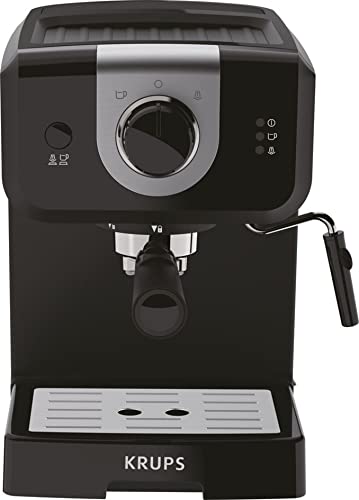Three Common Reasons Your Machine Espresso Isn't Working (And How…
페이지 정보
Colby 작성일25-02-08 09:25본문
How Does Machine Espresso Work?
 The machine espresso is made using precision pressure, and a filter technology that is awe-inspiring to make the coffee you enjoy. What exactly is it?
The machine espresso is made using precision pressure, and a filter technology that is awe-inspiring to make the coffee you enjoy. What exactly is it?
best espresso machine under 500 is created by forcing hot water under pressure through finely-ground coffee. The process is similar to making drip coffee, however the main difference lies in the pressure.
The Group Head
The group head is the portafilter you put in when making barista espresso coffee machine. It is responsible for dispersing water into the portafilter, and controlling the pressure of the resulting extraction. There are a variety of types of group heads, each with their unique advantages and drawbacks. Some focus on temperature stability, whereas others on pre-infusion options, and others are designed to control the lever. Some have a combination, like the E61. This is a preferred choice for baristas since it provides multiple advantages in a single package.
As you can see in the above photo, the group head has many notches in which you can put your portafilter, then twist it with your hands to secure it. There is also a gasket made of rubber which is located inside the notches to help create the seal when you insert your portafilter into the machine. The notches on the head allow for a precise placement of the portafilter, which is crucial to ensure an even extraction.
In addition to allowing you effortlessly insert your portafilter the group head is responsible to ensure that the temperature remains even. This is done by cycling hot water around the portafilter, and through the brew basin, ensuring the temperature is always right for extraction. It is important to remember that even a small deviation can make the difference between a good and excellent espresso.
The Pump
The motorized pumps that are used in espresso maker barista machines rotary provide nine atmospheric bars of pressure required for espresso extraction. This differs from manual piston machines which use levers. This pressure builds up by drawing tap water from a reservoir and pumping it through a heat exchanger prior to it is shot through the ground coffee in the group head.
Pumps are generally less expensive than piston-driven machines, and tend to last longer, although both types of machines can get damaged through overuse and lack of cleaning. They also add mechanical complexity and can lead to costly prices for even the simplest models.
Certain espresso machines eliminate the pump completely and instead utilize steam pressure to make espresso. The disadvantage of this is that the boiler that produces steam also increases the temperature of water to the point of boiling which could lead to excessive extraction. Theymi-automatic machine, you have to grind the beans and then tamp them by hand, but the pump regulates the flow of water and pressure. This is a great compromise between the human touch and the mechanised accuracy.
 The Filter
The Filter
Typically, espresso machines employ a filter to separate out the grounds of coffee when they pass through the hot water. The filter is also an essential component of the machine's temperature control, as it prevents overheating.
A filter also helps with flavor, as it permits a longer flowering phase. This allows beans to release their nuances and gives an opportunity for a better extraction.
However, it is important to keep in mind that even a good filter can result in a poor cup of coffee, since the quality of the beans and extraction are essential.
This is where the magic happens, it's what makes an espresso really taste good. The grouphead (also called the brewhead) is where you place the portafilter, which is the thingy which you put the coffee grounds into, when making espresso.
Steam-driven espresso machines make use of hot water that is heated in an airtight container to produce steam. The steam then moves hot water through the grounds of coffee under high pressure. These types of machines tend to be less expensive and easier to maintain than pumps-driven models. However, they are not as efficient in their capacity to create the perfect brewing conditions since they are only operating at 1-1.5 bars of pressure, while the perfect shot requires 9-10 bars.
In recent years, compressed air pump-driven espresso machines have become more popular. They use an air compressor to force hot water through the ground and are more mobile than electric steam-driven espresso machines.
 The machine espresso is made using precision pressure, and a filter technology that is awe-inspiring to make the coffee you enjoy. What exactly is it?
The machine espresso is made using precision pressure, and a filter technology that is awe-inspiring to make the coffee you enjoy. What exactly is it?best espresso machine under 500 is created by forcing hot water under pressure through finely-ground coffee. The process is similar to making drip coffee, however the main difference lies in the pressure.
The Group Head
The group head is the portafilter you put in when making barista espresso coffee machine. It is responsible for dispersing water into the portafilter, and controlling the pressure of the resulting extraction. There are a variety of types of group heads, each with their unique advantages and drawbacks. Some focus on temperature stability, whereas others on pre-infusion options, and others are designed to control the lever. Some have a combination, like the E61. This is a preferred choice for baristas since it provides multiple advantages in a single package.
As you can see in the above photo, the group head has many notches in which you can put your portafilter, then twist it with your hands to secure it. There is also a gasket made of rubber which is located inside the notches to help create the seal when you insert your portafilter into the machine. The notches on the head allow for a precise placement of the portafilter, which is crucial to ensure an even extraction.
In addition to allowing you effortlessly insert your portafilter the group head is responsible to ensure that the temperature remains even. This is done by cycling hot water around the portafilter, and through the brew basin, ensuring the temperature is always right for extraction. It is important to remember that even a small deviation can make the difference between a good and excellent espresso.
The Pump
The motorized pumps that are used in espresso maker barista machines rotary provide nine atmospheric bars of pressure required for espresso extraction. This differs from manual piston machines which use levers. This pressure builds up by drawing tap water from a reservoir and pumping it through a heat exchanger prior to it is shot through the ground coffee in the group head.
Pumps are generally less expensive than piston-driven machines, and tend to last longer, although both types of machines can get damaged through overuse and lack of cleaning. They also add mechanical complexity and can lead to costly prices for even the simplest models.
Certain espresso machines eliminate the pump completely and instead utilize steam pressure to make espresso. The disadvantage of this is that the boiler that produces steam also increases the temperature of water to the point of boiling which could lead to excessive extraction. Theymi-automatic machine, you have to grind the beans and then tamp them by hand, but the pump regulates the flow of water and pressure. This is a great compromise between the human touch and the mechanised accuracy.
 The Filter
The FilterTypically, espresso machines employ a filter to separate out the grounds of coffee when they pass through the hot water. The filter is also an essential component of the machine's temperature control, as it prevents overheating.
A filter also helps with flavor, as it permits a longer flowering phase. This allows beans to release their nuances and gives an opportunity for a better extraction.
However, it is important to keep in mind that even a good filter can result in a poor cup of coffee, since the quality of the beans and extraction are essential.
This is where the magic happens, it's what makes an espresso really taste good. The grouphead (also called the brewhead) is where you place the portafilter, which is the thingy which you put the coffee grounds into, when making espresso.
Steam-driven espresso machines make use of hot water that is heated in an airtight container to produce steam. The steam then moves hot water through the grounds of coffee under high pressure. These types of machines tend to be less expensive and easier to maintain than pumps-driven models. However, they are not as efficient in their capacity to create the perfect brewing conditions since they are only operating at 1-1.5 bars of pressure, while the perfect shot requires 9-10 bars.
In recent years, compressed air pump-driven espresso machines have become more popular. They use an air compressor to force hot water through the ground and are more mobile than electric steam-driven espresso machines.
댓글목록
등록된 댓글이 없습니다.

















